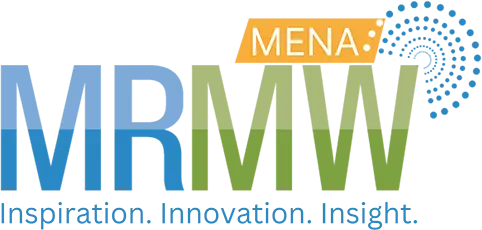The number of Internet users has grown exponentially in the past two decades. Simultaneously, more social media interactions meant more unstructured data available. Aside from the sheer numbers, analysing unstructured data from market research is also challenging because of its unorganised nature. Fortunately, recent advances in NLP technology have allowed organisations to capitalise on unstructured data and obtain actionable insights.
Tiankai Feng, the Director of Social, PR, and Voice of Consumer Analytics at Adidas, shared his approach to analysing unstructured data using NLP during the Insights Extravaganza Europe Conference 2021. Overall, he gave three takeaways on the potential of NLP for quantitative research:
- Extracting prevalent keywords for targeted marketing
- Identifying public sentiment towards a brand or product
- Obtaining actionable insights from seemingly uncorrelated topics
Sources of Unstructured Data
Unstructured data refers to data that isn’t classified into any pre-determined data models. For example, text data from Twitter messages and video data from Instagram reels. Traditionally, organisations collected unstructured data from physical documents such as survey forms.
Aside from desk research and other conventional methods, Tiankai listed several sources of unstructured data worth leveraging. They are social media analytics, Google Search, product reviews, customer service, and Net Promoter Scores.
Tiankai elaborated that the effectiveness of unstructured data heavily depends on your ability to apply them to three aspects of your organisation:
- Product: What do customers demand, and what product opportunities do you have.
- Story: How to position and communicate your market offerings around what customers care about.
- Availability: How to optimise your supply chain and sales channels to meet customer demand.
Quantitative data analytics process
Successful analysis of unstructured data requires a methodological approach to market research. Without a process-oriented approach, you will often find yourself returning to the drawing board. To that end, Tiankai shared his 6-step quantitative analytics process that he uses to optimise his market research workflows:
- Data: What and how to collect info about your customers.
- Processing: How to transform unstructured data into structured data.
- KPI: What data should you use to determine success, and how do they influence business objectives.
- Dashboards: Monitoring KPI and relevant metrics.
- Insights: Interpreting and understanding why the data exists.
- Actions: What actions to take based on the quantitative analysis.
Analysing Unstructured Data with Natural Language Processing (NLP)
Tiankai emphasised that analysing unstructured data involves quantifying them. Some ways that you can process unstructured data involve text analysis, sentiment analysis, examining seasonality, and correlation analysis.
Text analysis
Text analysis involves using natural language processing (NLP) techniques to extract valuable insights from a corpus. Tiankai explained that with NLP, you can determine prevalent keywords from datasets. Moreover, you can also classify these keywords into specific categories such as “Person”, “Place”, and “Brand”.
For instance, Tiankai categorises the most prominent keywords by product aspects – shirt colours, sizes, and seasons. Naturally, keywords that customers frequently mention are areas that you should pay attention to.
Tiankai demonstrated the effectiveness of text analytics in quantitative research with an example on Valentine’s Day. He discovered that loving oneself became a rising topic during COVID-19 lockdown due to increasing emphasis on mental health care.
Without this data, companies would continue focusing their Valentine’s marketing efforts around romance. On the other hand, unstructured data-backed marketing would have broadened what “love” means and emphasised self-love for Valentine’s Day campaigns.
Sentiment analysis
Sentiment analysis refers to the process of calculating overall sentiment (positive, neutral, negative) from text data. Extracting sentiment from text data at scale provides marketers with deeper understanding on why something is said.
Due to the myriad of options available, customers rarely have a clear idea of what they want. However, sentiment analysis allows marketers to better understand underlying attitudes, which aren’t always obvious at first glance. Thus, social listening coupled with sentiment analysis allows you to take on a more proactive role in shaping purchasing decisions.
Seasonality
In his presentation, Tiankai demonstrated the effectiveness of historical data using Google Trends. When researching on Father’s and Mother’s Day, he found that both days consistently have a 3 weeks lead-in time.
Obviously, this data is beneficial for developing marketing communication strategies. For instance, you can create anticipation and increase brand awareness a few weeks prior to the event. That way, you’ll maximise conversions and ROI during the actual holiday.
Correlation
Trending words often go in tandem with other seemingly unrelated topics. Tiankai provided an example that there was a correlation between Lionel Messi and music after analysing Adidas’ brand mentions.
Since Lionel Messi is the brand ambassador for Adidas, they were benefiting from this interesting correlation – but why? By leveraging NLP to dive deeper, Tiankai discovered that it is because fans were making music videos around Messi’s best field performances.
The future of market research
Changing consumer preferences entails organisations beginning to place more emphasis on market research. As a result, organisations will be adopting new and innovative market research approaches to understand their customers better.
Some industry experts even predict that organisations will soon combine data science and market research into one organisation. Not to mention the ever-increasing amount of unstructured data from emerging sources such as Twitch and Web3.
How will analysing unstructured data with NLP look like in the next 5 years? Nobody can say for sure but one thing is certain: companies are putting stock into NLP for market research, and you don’t want to left behind by your competitors.
You can find Tiankai’s presentation and more on MRMW in our MRMW video library. It also contains more than 100 case studies from past MRMW conferences. Your next chances to join MRMW live are during our MRMW North America (Atlanta, June 15&16, 2022), MRMW APAC (Singapore, July 6&7, 2022) and MRMW Europe (Berlin, September 20&21, 2022) editions.
Sign-up to receive our regular newsletters, updates and special offers!










 by
by 

One thought on “Analysing Unstructured Data from Market Research with NLP: Adidas”